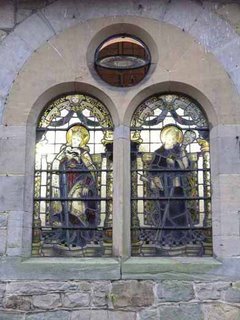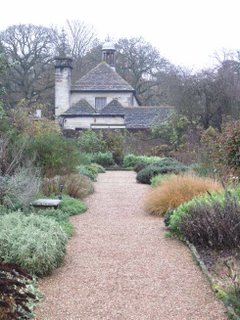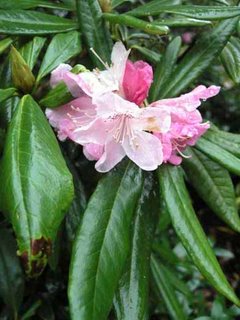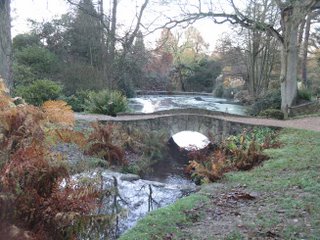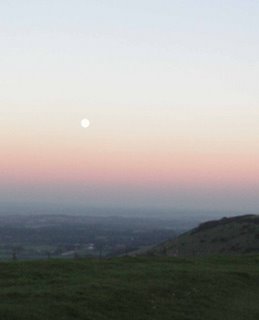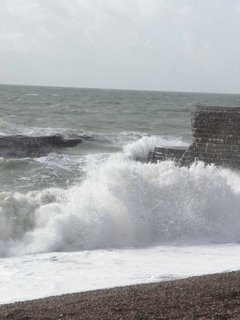
The millennium Seed Bank was built as a millennium project and opened in 2000.
Its main objective at the time was to house the seed of all UK flora. It has achieved this and currently stores seed for other member countries as well. As you can see from these pictures it is an extensive building with research labs, seed storage vault, seed cleaning facilities, office and lecture space as well as residential facilities for students/researchers. It has a life expectancy of five hundred years and the vault can apparently withstand the impact of a plane crash since it is on the flight path for Gatwick airport.
http://www.kew.org/msbp/

The building is quite unique in that visitors can see most of the work undertaken by staff. Visitors enter the middle of the building and through glass walls on either side can view the labs and seed treatment facilities, they can even at the end where this photo was taken, look down into the seed vault although they do not have access.
 When seeds arrive in cotton or paper bags they are dried to 15% MC, this is critical since it halts seed metabolism and ensures seed longevity. They are held in the drying room which is also a quarantine centre until ready for cleaning.
When seeds arrive in cotton or paper bags they are dried to 15% MC, this is critical since it halts seed metabolism and ensures seed longevity. They are held in the drying room which is also a quarantine centre until ready for cleaning.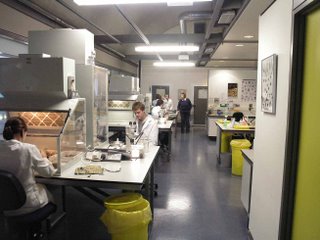
The seed cleaning lab uses a variety of equipment to clean the seed, from mechanical apirators to hand sieves. As much of the chaff and seed capsule is removed as possible without damaging the seed, this will help maximize storage space.
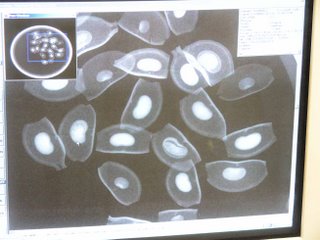
All seed lots are X rayed to determine viability, this image demonstrates potential viable and non viable embryos, some even show insect damage. This is not a measure of seed germination potential however.

Our group in the residential course was quite diverse, with people from South Africa, United States, England, Greece, Italy, Uganda and The Gambia. Here we are studying fruit morphology in the lab on day two. The course was quite intense and began at 9:00am and usually ran until 5:30pm. Of course many nights were spent at the pub.

Seed dissection to determine embryo viability was challenging especially with small seeds under the electronic microscopes. Many seeds went scittering across the lab floor.

The entrance to the seed packing room and the storage vaults.
Once the seed is cleaned and prooofed (cut tests, X ray etc.) it is sent down to the vault, this(below) is the packing room outside the -20c vaults
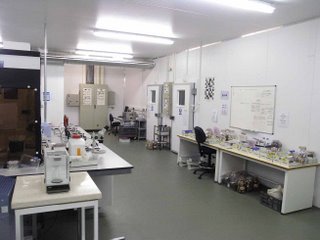

Jars of seed ready to go into the vault, the seed lots do not contain plant names just numbers. The reasoning for this is quite simple, plant names are in a continual state of flux and as the seed is stored for a long time (hundreds of years) the labels would have to be changed also. Plant names and the resigstration number are maintained in the data base, and the plant name can be easily changed there without interupting storage in the vault.
If you go to the link I posted near the top of the page you can find the full story of how these plants (below) grew from 200 year old seed, here seen in The millennium Seed Bank greenhouse being grown on to confirm indentification, several of the original packets were mislabeled.
T
The last day before we all went our separate ways, two from the University of Sussex, six from the University of Birmingham, two from Kirsentbosch Botanical Gardens in South Africa, one from the New England Wildflower Society (Garden in the Woods), one from the New York CityParks Department (native plant nursery) and one from the North Carolina Botanic Gardens.







